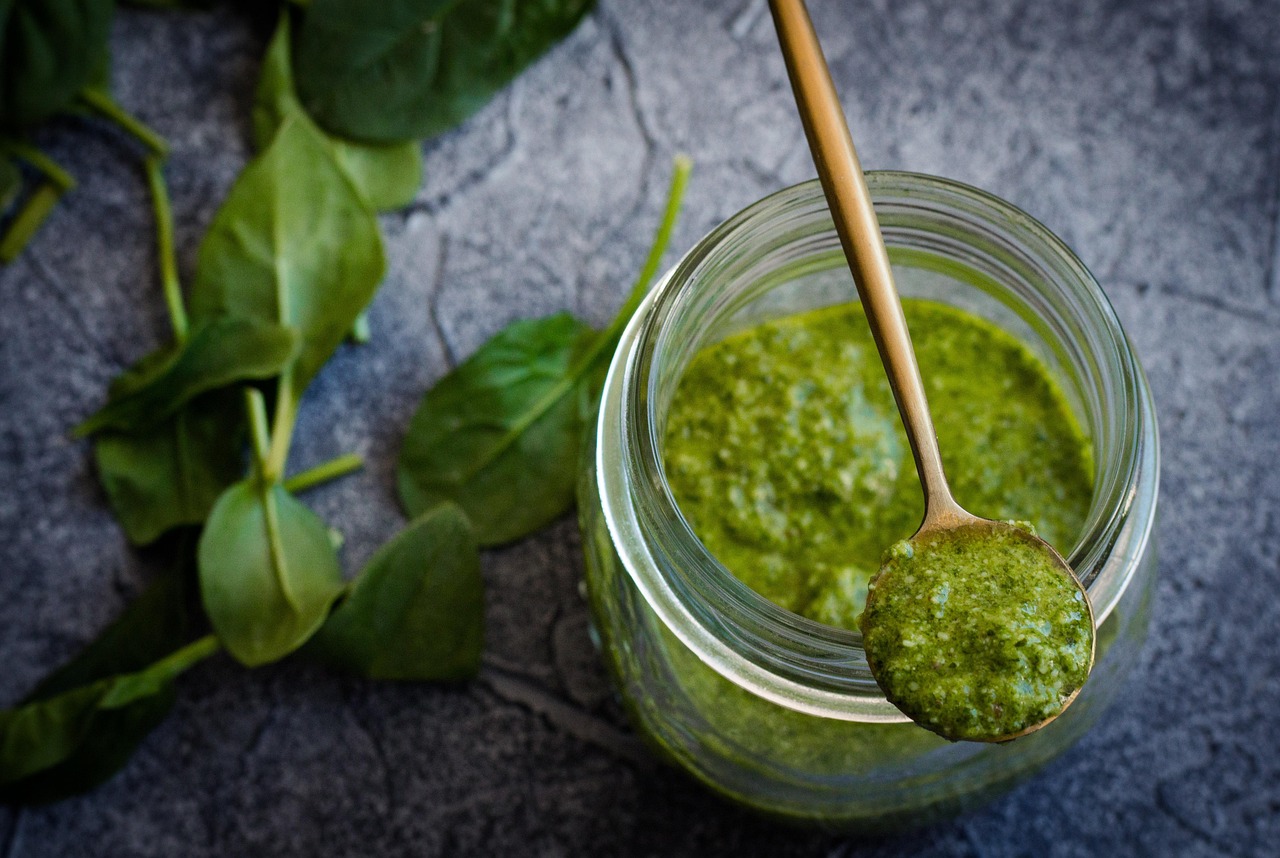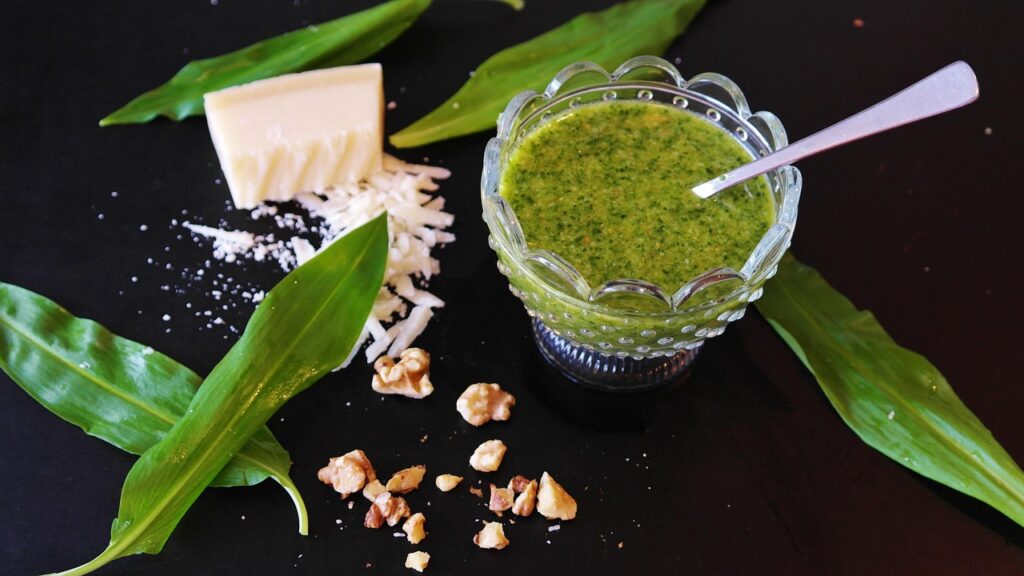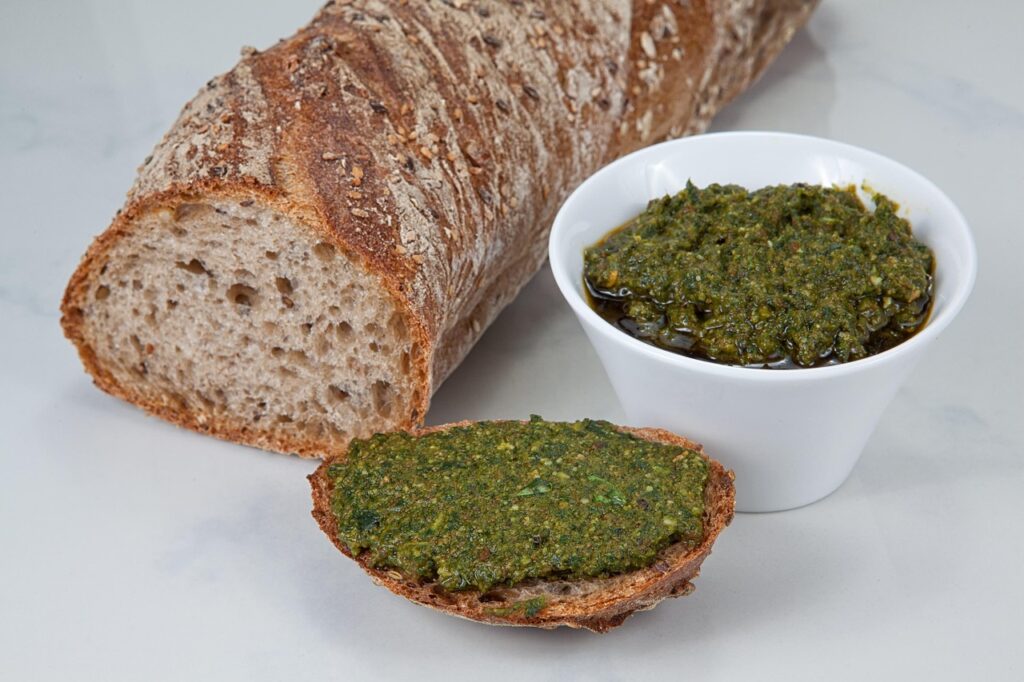Heian Trello Link & Beginner Guide (Roblox 2025)


Pesto sauce is a beloved staple in many kitchens, celebrated for its vibrant color and rich, aromatic flavor. Whether you’re a seasoned chef or a culinary novice, mastering the art of making pesto can elevate a variety of dishes. However, creating the perfect pesto sauce requires attention to detail and a few insider tips to avoid common pitfalls. In this guide, we’ll explore essential ingredients, troubleshoot common issues, and offer creative variations to suit different dietary needs.

The classic pesto sauce is a simple blend of fresh basil, garlic, pine nuts, parmesan cheese, and olive oil. Each ingredient plays a crucial role in achieving the signature taste and texture of this beloved sauce.
Basil is the star of the show in pesto sauce. Opt for fresh, vibrant leaves that are free from wilting or dark spots. Fresh basil provides the aromatic and slightly sweet flavor that’s essential to a good pesto.
Garlic adds a pungent kick to the pesto. Use fresh garlic cloves, as pre-minced garlic can lack the intensity needed for this sauce.
Pine nuts contribute a creamy texture and nutty flavor. Lightly toast them before blending to enhance their taste.
Aged parmesan cheese adds a savory depth. Grate it finely to ensure it incorporates smoothly into the sauce.
Good quality olive oil is essential. Its fruity notes complement the basil and garlic, creating a harmonious blend.
The choice of olive oil can significantly impact the flavor profile of your pesto sauce. Opt for extra virgin olive oil, known for its superior taste and quality.
Extra virgin olive oil is cold-pressed, preserving its natural flavors and nutrients. Look for oils with a fruity or peppery finish, as they pair well with the other ingredients in pesto. Avoid using oils labeled as “light” or “pure,” which may lack the depth of flavor needed for this sauce.
While pesto sauce is relatively simple to prepare, a few common mistakes can lead to disappointing results. Here are some pitfalls to avoid:
Over-blending can cause the basil to oxidize, resulting in a dull, brownish color. Blend just until the ingredients are combined to maintain the vibrant green hue.
Pre-grated cheese often contains anti-caking agents that can affect the texture of your pesto. Always opt for freshly grated parmesan for the best results.
Toasting pine nuts enhances their flavor, adding depth to your pesto. Skipping this step can result in a less flavorful sauce.

If your pesto turns out bitter, it can be due to a few reasons, such as using low-quality olive oil or over-blending the basil. Here’s how to fix it:
A pinch of sugar or a drizzle of honey can counteract the bitterness, balancing the flavors.
Adding extra parmesan can help mellow out the bitterness, providing a richer taste.
If the oil is the culprit, try substituting half with a milder oil like canola or sunflower oil.
For those with dietary restrictions, pesto can be easily adapted to suit different needs without compromising on flavor.
Replace parmesan cheese with nutritional yeast to maintain the savory flavor. Nutritional yeast offers a cheesy taste while keeping the pesto vegan-friendly.
Pesto is naturally gluten-free, but ensure that all ingredients, especially store-bought ones, are labeled gluten-free to avoid cross-contamination.
Follow these steps to create a delicious homemade pesto sauce:
Proper storage is key to preserving the freshness and flavor of your pesto sauce.
Place pesto in an airtight container and cover the surface with a thin layer of olive oil. This prevents oxidation and keeps the sauce fresh for up to a week.
For longer storage, freeze pesto in ice cube trays for easy portioning. Once frozen, transfer the cubes to a freezer-safe bag. Pesto can be frozen for up to three months.
For a brighter flavor, consider adding a splash of lemon juice to your pesto. The acidity cuts through the richness, offering a refreshing twist. Additionally, experiment with different types of parmesan or aged cheeses to vary the taste profile.

Pesto is a versatile sauce that can be used in a myriad of ways beyond the classic pasta dish.
Pesto makes a flavorful spread for sandwiches and wraps, adding a burst of flavor to your lunch.
Enhance roasted or grilled vegetables by drizzling them with pesto for a delicious side dish.
Stir a spoonful of pesto into soups for an added layer of flavor and richness.
Invite friends or family to taste your pesto and provide feedback. This can help you refine your recipe and discover new flavor combinations. Encourage honest opinions and be open to experimenting with different ingredient ratios to perfect your sauce.
A food processor is an invaluable tool for making pesto, and using it efficiently can save time and effort.
The pulse function allows for better control over the texture of your pesto, preventing over-processing.
Periodically stop to scrape down the sides of the processor bowl to ensure even mixing and a uniform consistency.
With these tips and techniques, you’re well-equipped to create a delicious pesto sauce that can enhance a variety of dishes. Embrace the process, and don’t be afraid to experiment with flavors and ingredients to make the recipe your own.